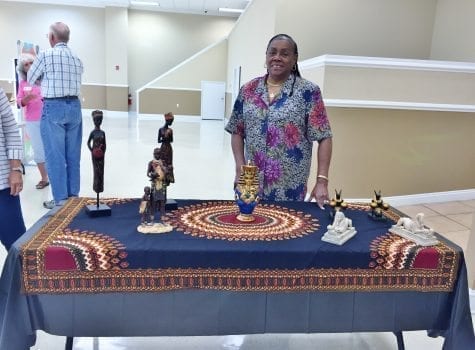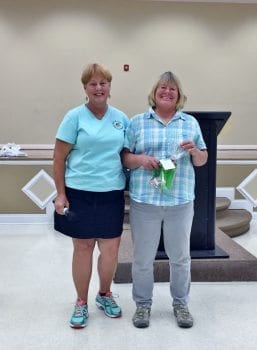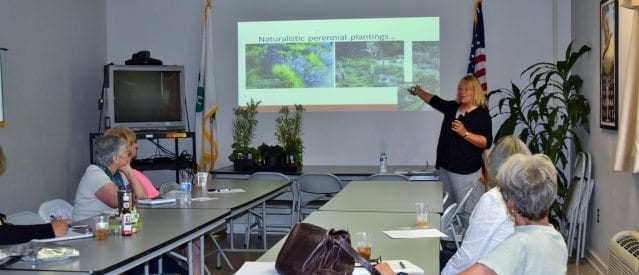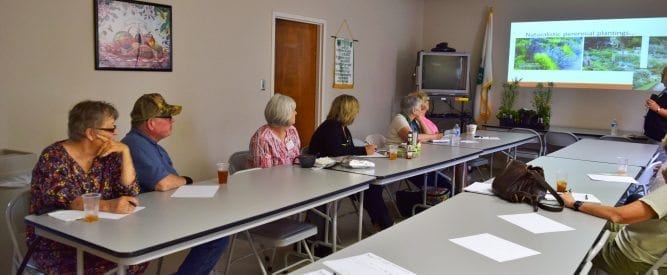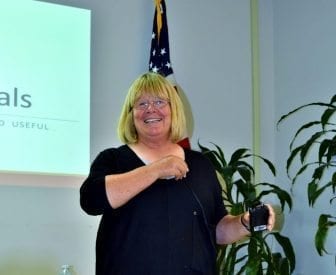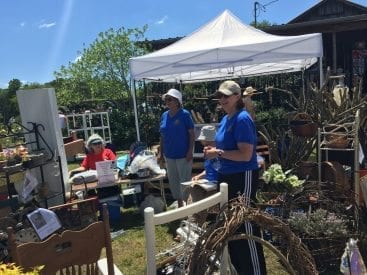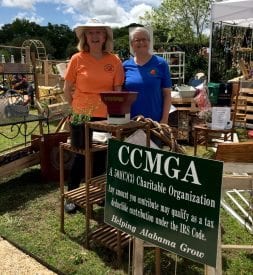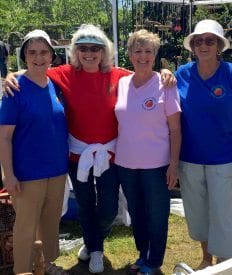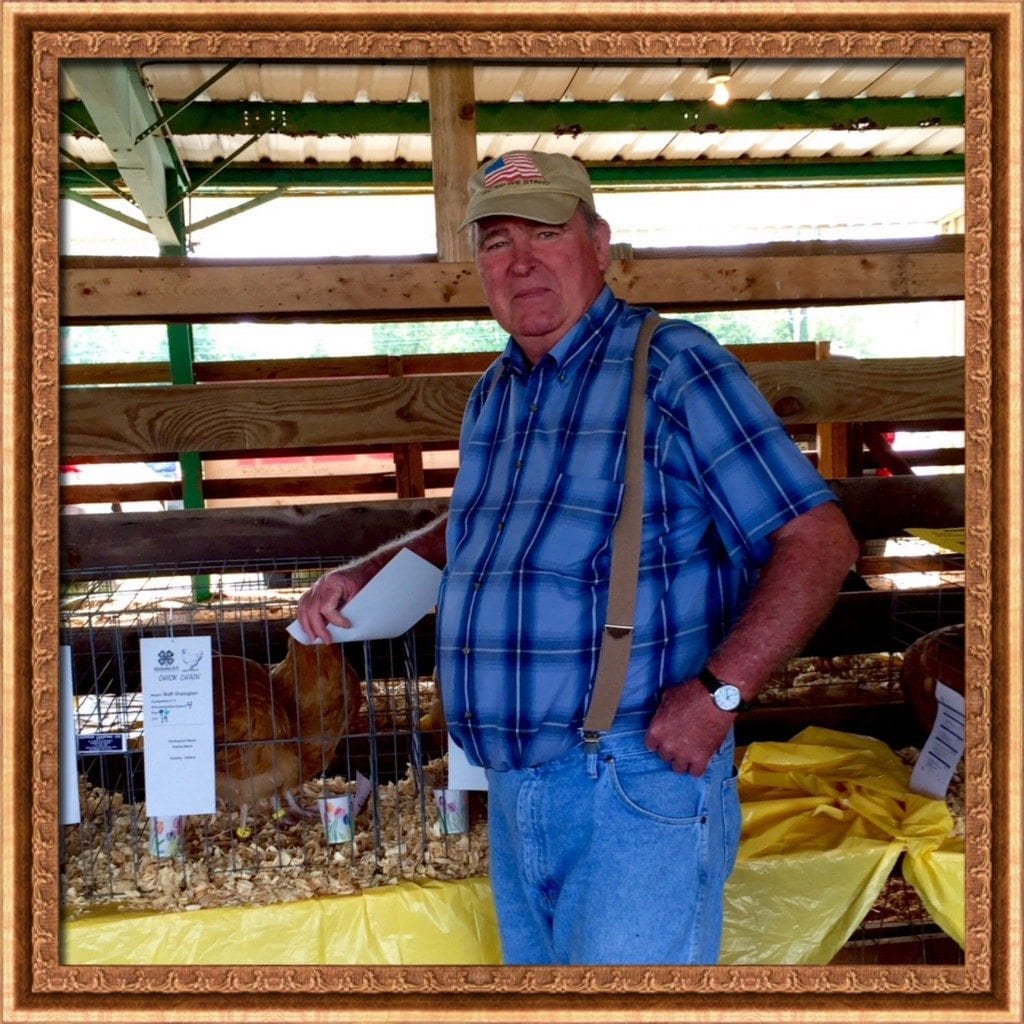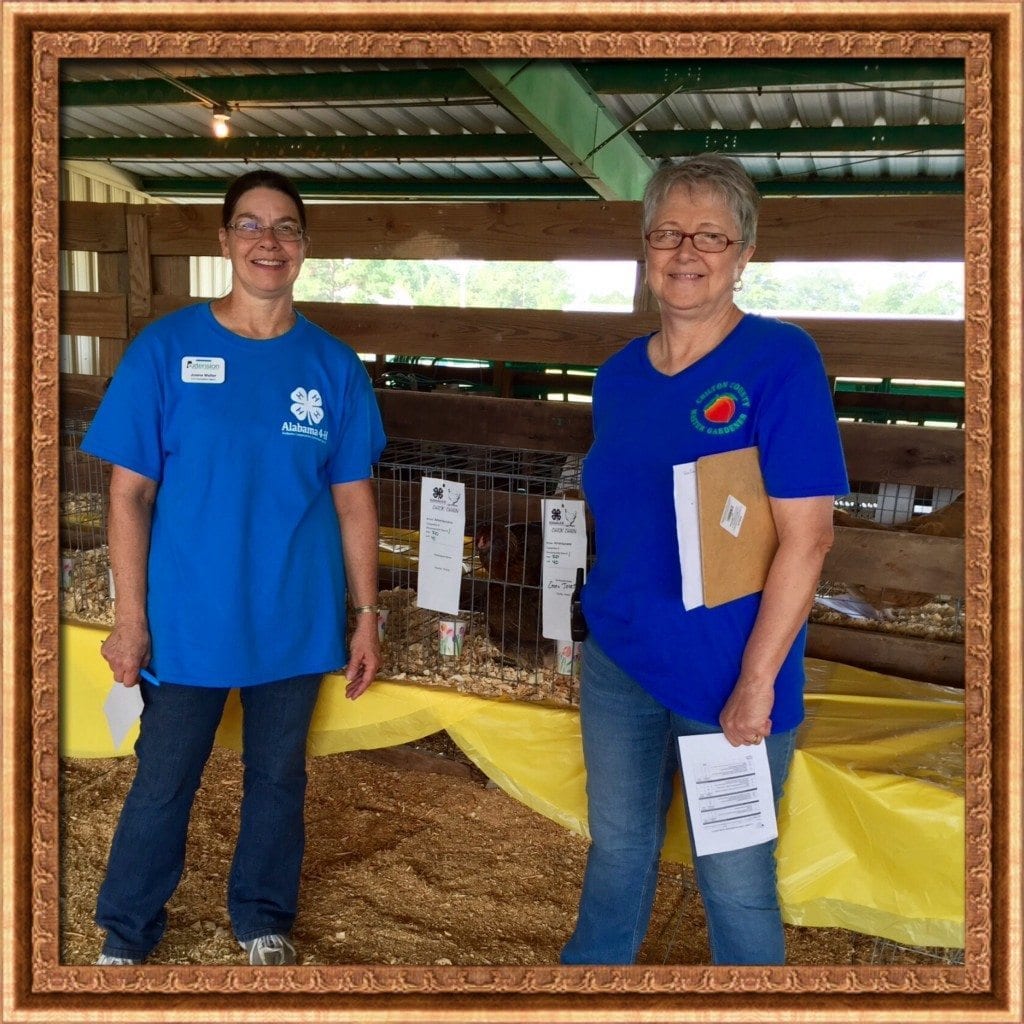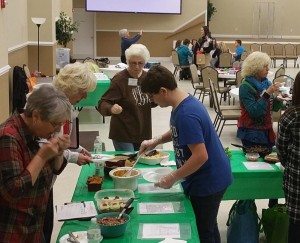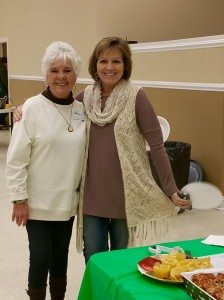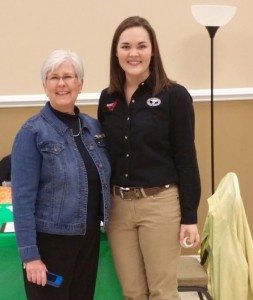Our meeting for September was very interesting. The theme presented by our hospitality hostess, Anita McGee, was Africa, with decorations provided by Rose Utendahl and others. The refreshments were provided by many members and included breads, homemade biscuits, honey butter, and lots of jams, jellies, and preserves, and a fruit tray.
Our program was provided by Renee Thompson, Harvest for Health Outreach coordinator with Alabama Cooperative Extension System. Harvest for Health is a program for breast cancer survivors to encourage healthy lifestyle practices by planting a garden and growing their own food. This is a program started in 2010 between the Comprehensive Cancer Center of UAB and the Jefferson County Master Gardeners. It now also includes the Community Fund of Greater Birmingham, the Alabama Cooperative Extension System, and various groups of Master Gardeners around the state. The Master Gardener volunteers are needed to participate as mentors, while the Extension provides supplemental training and coordinates the seasonal supplies needed for a garden. Master Gardeners are required to contact their participant twice a month; once as a home visit and once by phone or email. But many spend much more time cultivating a friendship while gardening. Mrs. Thompson said that some of the survivors have come full circle, and are enrolling in the Master Gardener program to become Master Gardener themselves. The program has shown that gardening at home is beneficial because it allows participants to take ownership over producing fresh vegetables right outside their door. They are more likely to spend time outside and are more inclined to eat what they have grown. Dr. Sue Webb, Chilton County Master Gardener, shared highlights from a native plant conference she recently attended.
News
Home for the Holidays
Home for the Holidays can also be called Fun for the Holidays!
Tickets for the Home for the Holidays Fundraiser event go on sale September 15. Plan now to go and enjoy all the food, shopping, and drawings planned for the day! The tickets must be purchased prior to the event and are limited. They may be purchased at the Chilton County Extension Office at 504 1st Avenue N., Clanton. The tickets are $10 each. There will be door prizes, a tasting table, recipe booklet, and items available to purchase from various vendors and crafters. There will also be a Second Chance room.
Additional Information – Home for the Holidays Flyer
September 28th Lunch and Learn
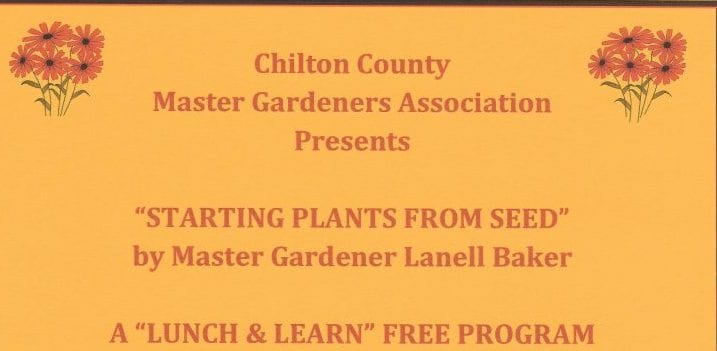 CCMGA and Chilton County Extension Office will host a Lunch and Learn program on September 28, 2016 at the Extension Office. Master Gardener Lanell Baker will be presenting a program on starting plants from seed. It will be from 12 to 1 p.m. Drinks will be provided by the Extension Office. All you need to do is bring yourself and a sack lunch!
CCMGA and Chilton County Extension Office will host a Lunch and Learn program on September 28, 2016 at the Extension Office. Master Gardener Lanell Baker will be presenting a program on starting plants from seed. It will be from 12 to 1 p.m. Drinks will be provided by the Extension Office. All you need to do is bring yourself and a sack lunch!

2016 Expo and Demo Garden Grand Opening
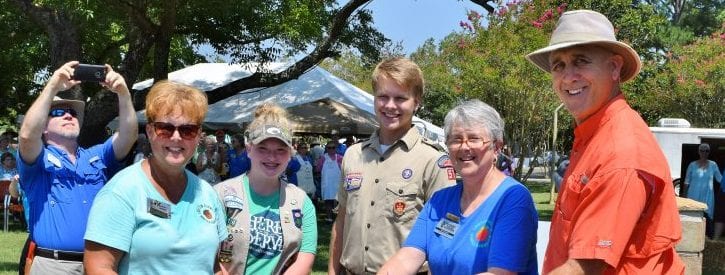
The Grand Opening of the Demo Garden was held August 6, 2016, just before the Farm, Home, and Wildlife Expo. On hand for the ceremony was Eagle Scout Clay Vinson, and Girl Scout Hannah Childress. Clay’s project for Eagle Scout was the Demo Garden’s Pergola and surrounding Butterfly Flowerbed. Hannah’s project for her Gold Badge was the Keyhole Garden. The Expo is always a big event that the Master Gardeners look forward to each year. Master Gardeners are in charge of the ice cream tasting, fruit tasting, corn on the cob hut, plant sale, and of course, the Demonstration Garden. Go to Smilebox to see a slideshow of photos from the Expo and Demo Garden.
Sarah Saunders Wins Peach Cook Off
CCMGA member Sarah Saunders won 1st place this year in the Peach Festival Cook-Off with her peach upside-down Bundt cake. Congratulations, Sarah! The first time she entered, Sarah won 3rd place with a peach cake that wasn’t a Bundt style. Entries are judged on appearance, uniqueness, creativity, and taste. In fact, taste can count as many as 60 points. And of course, the recipe must include fresh Chilton County peaches! First, second, and third place winners receive $50, $35, and $25. Maybe we can talk Sarah into bringing one of these delicious cakes to our next monthly meeting!
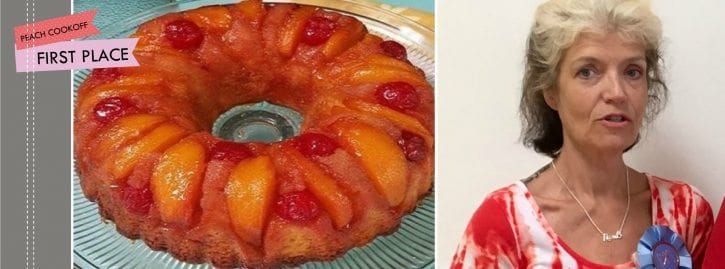
Making Peach Salsa at CREC

Our very own Harriett Jackson was interviewed by WSFA channel 12 out of Montgomery VERY early this morning at the Chilton Research and Extension Center. Harriett demonstrated how to make Peach Salsa, which she and some other CCMGA members made last year for the EXPO. Sondra Henley and Treasia Bennett helped her chop the vegetables and fruit for the salsa. The recipe is also posted on the WSFA website. Thanks, Harriett for doing a great job of representing our association and Chilton County!
Lunch and Learn
Native Perennials by Dr. Sue Webb
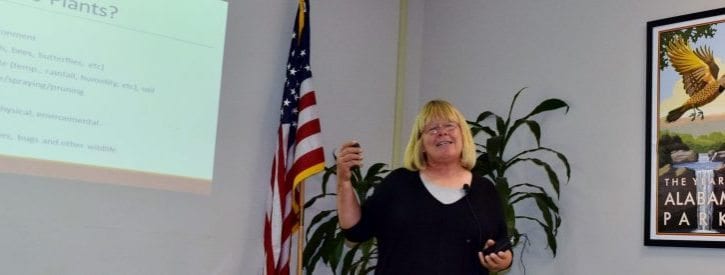
Our Lunch and Learn for April 27th was held at the Chilton County Extension Office and was all about Native Perennials. The program was brought to us by one of our members, Dr. Sue Webb, who has a doctorate in Microbiology and is a graduate of the Native Plant Certification Program at the Birmingham Botanical Gardens. She brought several samples of native flowers that populate Alabama and told all about growing native perennials for a beautiful, easy garden .
We will host a Lunch and Learn the 4th Wednesday of each month from 12-1:00. This month will be “Daylilies” by Trisha Williams and Audrey Giles, June will be “Salad Bowl Gardening” by Harriett Jackson, July will be “Organic Gardening” by Bill Blackwell, August TBA, September “Starting Seeds” by Lanell Baker, the rest of the year TBA. Call the Extension Office at 280-6268 to reserve your spot, seating is limited.
Fundraiser at Antiques in the Garden
Fun with Fundraisers
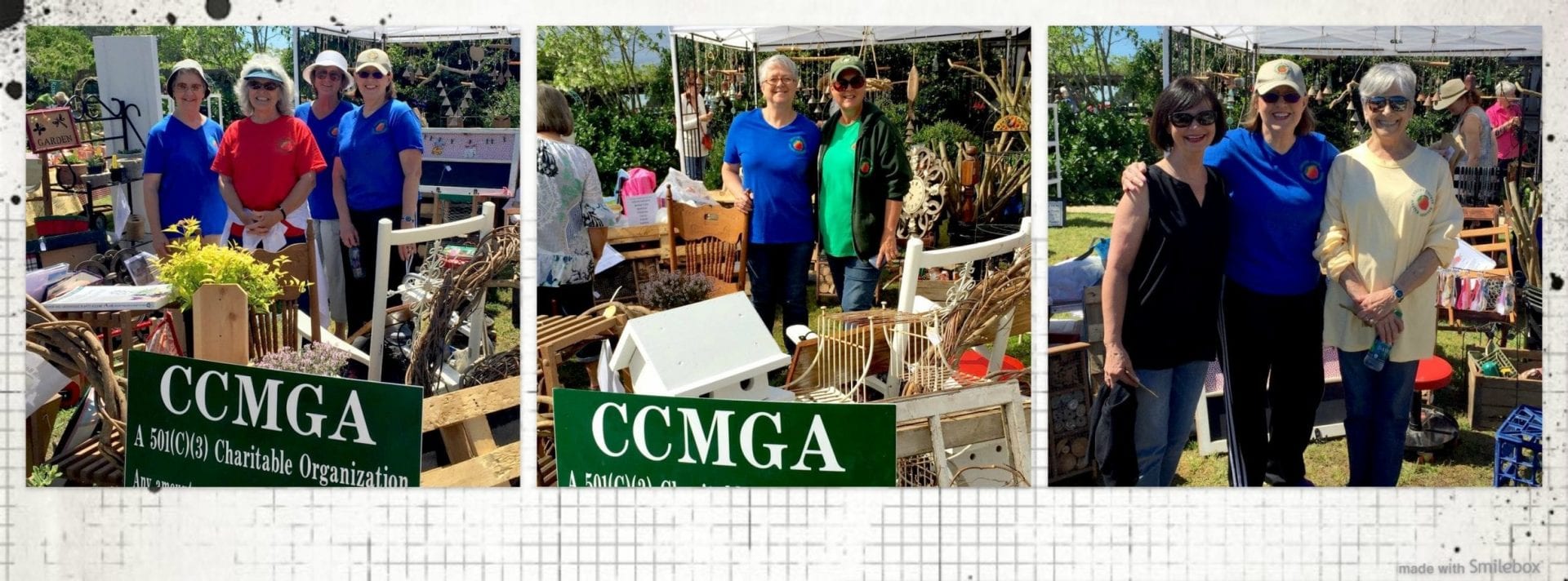
Chilton County Master Gardeners’ first fundraiser of 2016 was a booth at Antiques in the Garden held at Petals from the Past on April 22-23rd. There were many handmade crafts including hod baskets, hypertufa planters, vine wreaths, gardening towels, planter chairs, birdhouses, and many other interesting items. This was our first time to use this venue as a fundraiser, and I think it’s a keeper! The weather turned out to be beautiful, even though several members got drenched setting up in a downpour!
What’s a Chick Chain?
Chilton-Coosa 4-H Chick Chain
By Pat Farmer
Chilton and Coosa counties in conjunction with the Alabama Cooperative Extension Service and Alabama 4-H sponsor a program each spring for 4-H members between the ages of 9 – 18 years called Chick Chain.
Participates receives 10 baby chicks (5 each of two breeds), and they have to take care of them for about 21 weeks. They are taught how to house and feed the baby chicks. Two of our members, Jerry and Pat Farmer assist Josine Walter, the ACES 4-H Regional Agent and other ACES staff members in handing out the 2 day old chicks (500+). They also go on many farm visits during the summer to check on the progress of the chicks.
The 4-H participants learn several things during the time of raising their chicks: how to produce healthy chickens, recordkeeping skills, poultry management skills, business management and they also achieved a sense of pride and accomplishment in a job well done.
Judging The Beef Cook-Off
Master Gardeners Pat Farmer and Ann Moore helped judge the Chilton County 4-H Beef Cook-Off held on January 22nd at the Jemison Municipal Complex. This is an event put on every year by the Chilton County 4-H and the Alabama Cattlemen’s Association. Master Gardeners are proud to be able to help with it.

 Menu
Menu Search
Search


